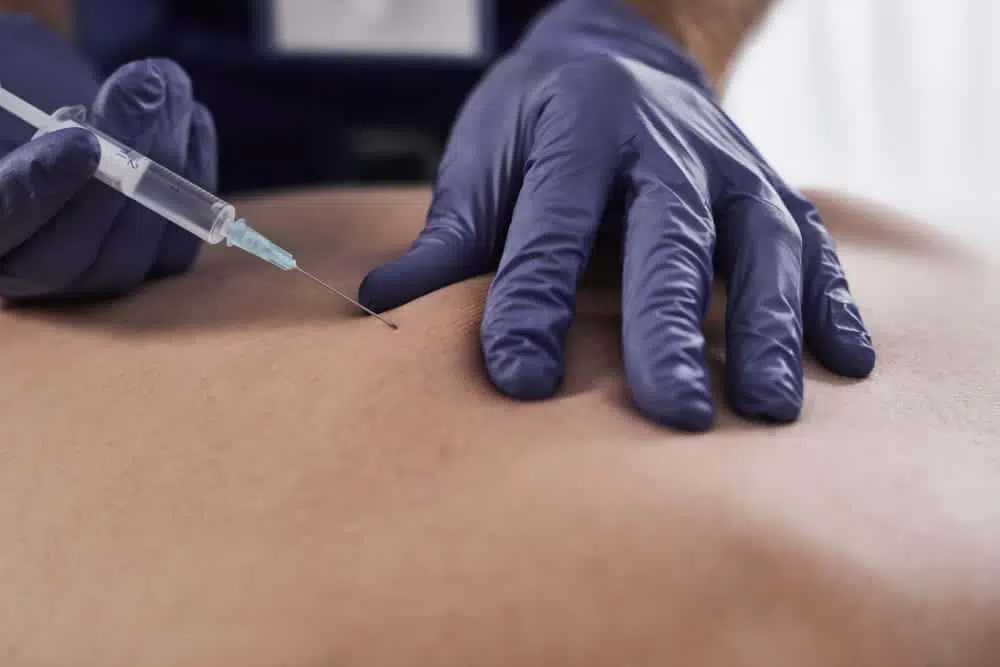Call Now!
Torrance Office: +1 (424) 360-0155

If you're suffering from chronic pain in your back, neck, buttock, hip, arm or leg, you're probably researching every possible option for pain management in Torrance CA.
Spinal injuries, nerve problems, and degenerative conditions can you make your life miserable until you get the underlying causes pinpointed and dealt with.
Two kinds of injections can help with both of these objectives -- epidural steroid injections and facet joint injections. What are the similarities and differences between these forms of pain management? Here's an explanation from your pain management doctor at Rolling Hills Medical.
Epidural steroid injections (ESI) can help relieve pain caused by inflamed spinal nerves due to spinal stenosis or disc herniation. Epidural steroid injections can help treat back pain, neck pain, arm and leg pain.
ESI's are named because the injections are made into an epidural space in the spine. This space represents the area between the spinal vertebrae and the membrane covering them, a structure known as the dura.
An alternative to spine surgery, the corticosteroid injected into the epidural space serves as a powerful anti-inflammatory. When this drug is injected next to an inflamed area that pinches nerve tissue, it reduces the swelling and inflammation to relieve, not only local pain but also referred pain from the nerve impingement. (Your injection may contain a local anesthetic in addition to the corticosteroid.) Epidural steroid injections are commonly recommended when more conservative treatments have failed for such conditions as:
Epidural injections can also be performed to help identify the precise cause of your painful condition. By injecting one specific nerve or nerve root and noting the results, your pain management physician can discover the exact point of injury, inflammation or impingement. In many diagnostic epidural injections, a local anesthetic is administered without a corticosteroid.
A pain management doctor may perform an epidural injection in one of three different ways. The simplest method, called a caudal injection, accesses the epidural space indirectly. A translaminar injection goes directly into the epidural space, where it may or may not reach a specific nerve. The most precise method, a transforaminal injection, uses fluoroscopy to help the doctor aim for a precise nerve location.
Epidural steroid injections aren't for everyone. You must be able to lie flat on your stomach for the procedure. Pregnancy, diabetes, heart failure, and NSAID use are all potential contraindications. You might experience bleeding, headaches, infection, and a temporary increase in your pain as side effects.

Like epidural steroid injections, facet joint injections deliver pain-relieving medication (anesthetic and/or steroids) to the spine.
The injection procedure, also called a facet block, can be used either to diagnose a spinal problem or to treat pain. The most important difference between the two techniques is the injection site.
Facet joint injections focus on the joints that connect and articulate the vertebrae. The needle may penetrate the facet joint itself, or it may penetrate a medial nerve branch that routes nerve signals from a particular facet joint. Facet joint injections are administered to help diagnose:
A facet joint injection is performed under local anesthesia. Your pain management doctor in Torrance will use fluoroscopy as a visual aid to ensure the greatest accuracy possible. Anesthetic is initially injected into the joint or nerve branch to determine whether deadening this area actually makes your pain go away. If it is successful, then we've located the exact source of your symptoms. We can then inject a corticosteroid into that area for 3 to 6 months of relief.
While we're administering the corticosteroid, we may also perform another procedure called radiofrequency neurotomy. This procedure involves the installation of radiofrequency needles which deaden the nerve for even more profound relief than drugs alone might provide.
Facet joint injections come with their own set of considerations. You shouldn't drive or exert yourself for 24 hours following the procedure. Possible side effects include bleeding, infection, nerve damage, pain at the injection site, and allergic reactions.
Epidural injections are used to treat pain that starts in the spine and radiates to an arm or leg. It is injected near the affected nerve.
Facet joint injections are administered to a very specific set of joints, placed into and around the facet joints, which are the small joints located between each vertebra on the back of the spine. Facet injections are prescribed for patients with pain caused by degenerative/arthritic conditions or injury.
Could you benefit from an epidural steroid injection, a facet joint injection, or some different form of pain management altogether? Or need a second opinion on spinal fusion surgery in Torrance? The best way to find out is by calling Rolling Hills Medical at 424-250-8699. Our pain management doctors will be happy to answer your questions!
